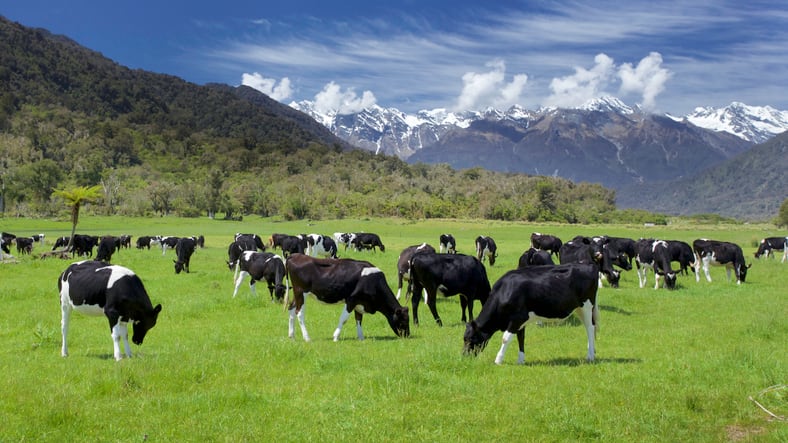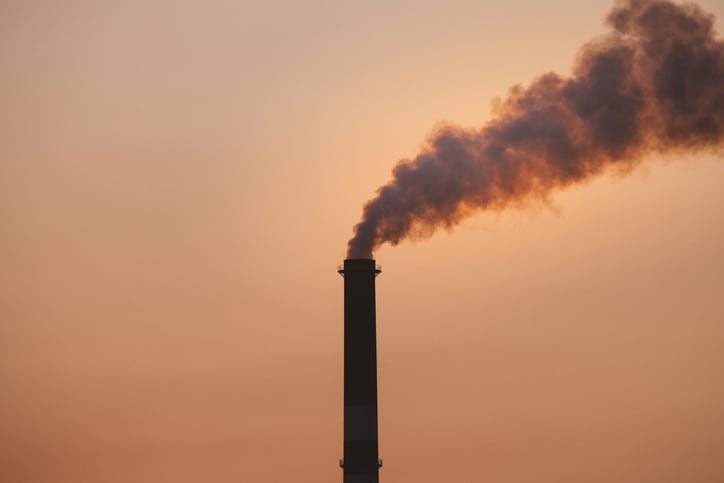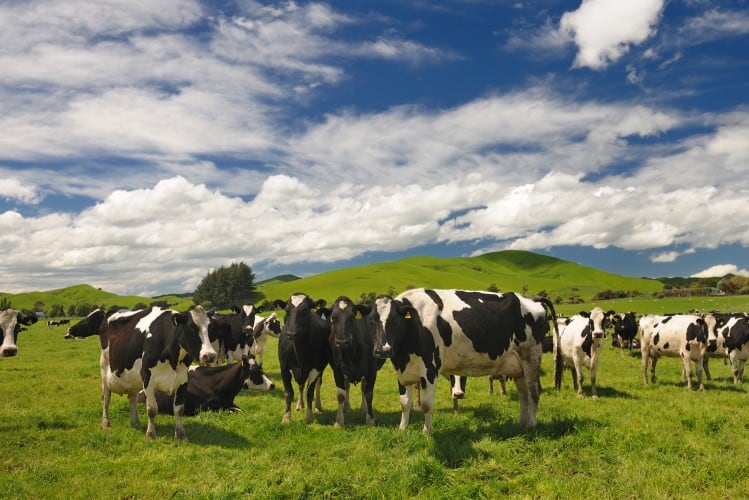Funding secured from FMCG majors Mars and Nestlé will be used to advance on-farm solutions and services and get Fonterra closer to meeting its emissions reduction targets.
In particular, scope 3 emissions, mostly from Fonterra’s dairy farms, form 94% of the co-op’s entire emissions footprint. This means that solutions that can minimize enteric methane, nitrous oxide and carbon dioxide emissions will be in particular focus in the years to come.
But sustainability progress comes at a price, and Fonterra – which has been testing various novel technologies including its own ‘probiotic for cows’, Kowbucha – is wasting no time in re-investing the funding it secured from the two food giants.
From the new season, the co-op’s farmers will be able to benefit from additional monetary incentives for adopting farm sustainability measures, and will also be given access to test novel solutions, if the suppliers meet specific objectives under the co-op’s Cooperative Difference program.
Meanwhile, scrutiny from the two food firms is to be expected.
Mars Snacking chief R&D, procurement and sustainability officer Amanda Davies suggested the confectionery giant was “providing cash, tools, and technology to support farmers in making meaningful, long-term changes”.
Nestlé New Zealand CEO Jeniffer Chappell echoed the sentiment, adding that the company was ‘fostering new economic opportunities’ for Fonterra farmers, which feeds into Nestlé’s own net-zero ambitions.
The challenge for Fonterra is that while some changes can bring more immediate results – such as switching from coal to green electricity to reduce scope 2 emissions – tackling on-farm emissions often means relying on novel, largely unproven technologies, or long-term regenerative practices that may take years to deliver positive results.
Here’s how Nestlé and Mars have supported Fonterra in recent years.
From a ‘net-zero’ farm to seaweed-based feed
Fonterra and Nestlé first announced their sustainability partnership in December 2022. It involves several initiatives: notably, a concept net-zero carbon dairy farm that’s hoped to be the first commercially-viable entity of its kind.
Fonterra's targets and emissions profile
Fonterra’s scope 1 emissions (direct emissions from manufacturing sites, transport, etc) comprise 5%; its scope 2 emissions (indirect, from energy) - 1%; and its scope 3 emissions (indirect, from farming activities) form 94% of the co-op's total GHG emissions.
Fonterra’s SBTi-approved targets comprise:
Reduction in absolute scope 1 and 2 GHG emissions by 50.4% by FY2030 from a FY2018 base year.
Reduction in scope 1 and 3 FLAG GHG emissions* from dairy by 30% per tonne of fat-and-protein-corrected milk by FY2030 from a FY2018 base year.
Ensuring that around 80% of its suppliers will have science-based targets by FY2028.
No deforestation, with a target date of no later than December 31, 2025.
*FLAG emissions involve both emissions reductions (e.g. reducing fertilizer use and eliminating deforestation) and removals (e.g. deploying silvopasture and enhancing soil carbon) and are met on a net basis.
Fonterra has not set a long-term or net-zero target under SBTi – though the company told us it aims to be ‘net zero carbon by 2050’.
To get to net-zero under SBTi’s Net Zero Standard framework, companies must have both near- and long-term targets set out. Under the framework, if scope 3 emissions make up more than 40% of a business’ total emissions – as is the case for most dairy processors – then the near-term target must cover two thirds of scope 3 emissions. Similarly, the long-term targets - which must be met by 2050 – should also cover most (95%) scope 1, 2 and 3 emissions.
In its first year, much of the focus had been to benchmark and investigate what factors impact emissions the most (e.g. fertilizer and feed types) while targeting an increase in milk production.
In 2024, the farm reportedly achieved around 27% reduction in absolute emissions and a 5.5% reduction in emissions intensity. But the reduction in absolute emissions over the last two seasons was coupled with a decrease in milk production.
This is because cow numbers contracted (from 600 to 550) and Fonterra had experimented with switching to 10 milkings across 7 days instead of 2 per day. The move resulted in up to 12% decrease in milk solids production per cow and the farm subsequently returned to twice-a-day milking.
Fonterra director of sustainability Charlotte Rutherford said at the time that the co-op had been ‘trialing different tools and approaches to see what works and what doesn’t, and while some trials have shown promising early results, others have provided valuable insights and lessons’.
The focus over the next three seasons is to reduce emissions intensity, targeting a 30% reduction by the 2026/27 season. This will be achieved through a focus on breeding and reproduction, calf-rearing, nitrogen use efficiency and the use of novel technology. Over the last two seasons, the farm has used crossbred sexed semen on the top 60% of cows based on their genetic merit, which has led to significant genetic gains, although challenges in conception rates remain.
The partnership is also supporting other technologies on farm, such as EcoPond, an effluent treatment based on adding ferric sulphate to inhibit the growth of methanogens in the effluent pond; as well as silvopasture, the practice of integrating trees with grazing animals.
The trees will grow to 10-15m in height, with the aim to balance the carbon, shade and shelter benefits and mininize negative effects on pasture growth and management, according to the co-op.
“We continue to trial a variety of technologies to reduce emissions on the net-zero pilot dairy farm,” Rutherford told us.
“Some trials have shown early benefits, like the use of novel technology, EcoPond, which has reduced the methane produced by the effluent in the test unit by 93% since its installation in May 2024. From next season we hope to be treating the entire effluent pond, which we expect will reduce the farm’s footprint by 5%.
Nestlé's regen objectives
Globally, Nestlé is investing CH1.2bn (US$1.35bn / NZ$2.36bn) by 2025 to advance regenerative agriculture and reduce emissions, aiming to source 50% of their ingredients through regenerative agriculture methods by 2030.
“Other trials will need multiple seasons to demonstrate their effects. In the silvopasture trial, trees have been planted throughout the paddock to provide shade and shelter as well as storing carbon. We won’t know the benefits, or potential effects on pasture growth, until the trees are much larger.
“We’re also looking at longer-term trials focused on genomics and breeding.
“Herd efficiency service LIC analyzed the herd on the net-zero pilot dairy farm and found a potential 16% reduction in methane (8-9% on footprint) per kilogram of milk solids (kgMS) if all cows performed as efficiently as the top 25%.”
“This will require a continued focus on breeding the right replacements over the next few seasons, as well as managing animal health and feed to enable those cows to perform to their genetic potential once they start producing milk.”
Pressed on the importance of genomics and genetics – an emerging field with regards to sustainability improvements - Rutherford added: “Cow quality and production efficiency will continue to play a significant role in our Emissions Intensity reduction ambition.
“An analysis of 4-8 yr old herd tested cows on Fonterra farms revealed a 42% productivity variation per kgMS between the top and bottom quartiles within herds. It also showed a 44% difference in production efficiency when a cow’s liveweight is added to the analysis.
“Genomics and other advanced herd improvement technologies, such as sex-sorted semen, offer significant potential to accelerate genetic gains. These advancements can assist in closing both the productivity and production gap between top and bottom quartiles within herds.”
In addition to the net-zero farm, Nestlé is supporting separate pilots to see supplying farmers implement changes aimed at lowering their on-farm GHG emissions, for example through improved management of feed and pasture, on-farm tree planting and enhanced milk production efficiency.
Baseline GHG emissions profiles have been calculated for the first group of around 50 farms, based on their emissions during the 2021/22 season.
In 2022/23 the first group of 48 farms in the pilot achieved an average 5.2% reduction in emissions intensity, compared to their 2021/22 season baseline. Results for the 2023/24 season will be made available early next year.
Mars, meanwhile, has supported Fonterra in trialing Asparagopsis (red seaweed) alongside Australian company Seaforest.
“We continue to partner with Seaforest to see if aspargopsis can reduce methane in a way that is good for the cow, good for the farm, good for the environment and good for the milk, ensuring it is safe for consumers and that there is no impact on milk taste or quality,” a co-operative spokesperson told us.
“We’ll need a broad range of options and we believe asparagopsis solutions have great potential. We will continue to invest in trials and the R&D needed to give these solutions every chance of success at scale in the dairy industry.”
Fonterra's new funding initiatives
Co-Operative Difference payment
Comprising 1-5 cent per kgMS payment: To date, a total of up to 10 cents per kilogram of milk solids (kgMS) has been possible across all achievements within Fonterra’s Co-operative Difference framework. A new Emissions Excellence achievement will offer a further payment of between 1-5 cents per kgMS for farms that meet certain criteria. Based on last season’s data, it’s estimated that approximately 5,000 farms will be eligible for this payment next season, says the co-op.
Funding from Mars and Nestlé, to be split between:
On-farm solutions: Farmers who achieve the Co-operative Difference will be eligible for access to on-farm tools or services designed to further improve emissions efficiency. Based on last season’s achievements, 87% of farmers would’ve been eligible, the co-op says.
Additional 10-25 cents per kgMS Emissions Incentive payment: Farmers who achieve the Co-operative Difference and have one of the lowest emissions footprints in the co-op will receive an Emissions Incentive payment of between 10-25 cents per kgMS. Based on last season’s data it’s estimated that between 300-350 farms will be eligible for this payment next season. (Fonterra is owned by around 10,000 dairies.)
Fonterra is also developing its own solution for enteric methane mitigation, the probiotic-based Kowbucha, which last year showed promising results according to head of science Dr Jeremy Hill.
Fed to young dairy animals in a bid to alter their gut and immune system to reduce methane production in the animal, the supplement reduced methane in calves by 20%, persisting even after 12 months.
“We remain excited by the potential of Kowbucha and have filed several patents to secure our intellectual property relating to this innovation,” a Fonterra spokesperson told us.
“To help accelerate development of the solution, we have also established a wholly owned subsidiary company Kowbucha Ltd and employed an experienced CEO and small dedicated team to do so.”
The proof remains in the pudding, however, and Fonterra remains ‘committed to improvement’, according to co-op CEO, Miles Hurrell.
Addressing the new incentives in February, he said: “We’re growing relationships with customers who value the hard work farmers put into producing sustainable, high-quality milk, along with the co-op’s quality of on-farm data and ongoing commitment to improvement.
“This helps us make progress towards achieving our on-farm emissions target and deliver the highest returns for our farmer shareholders’ milk.”



